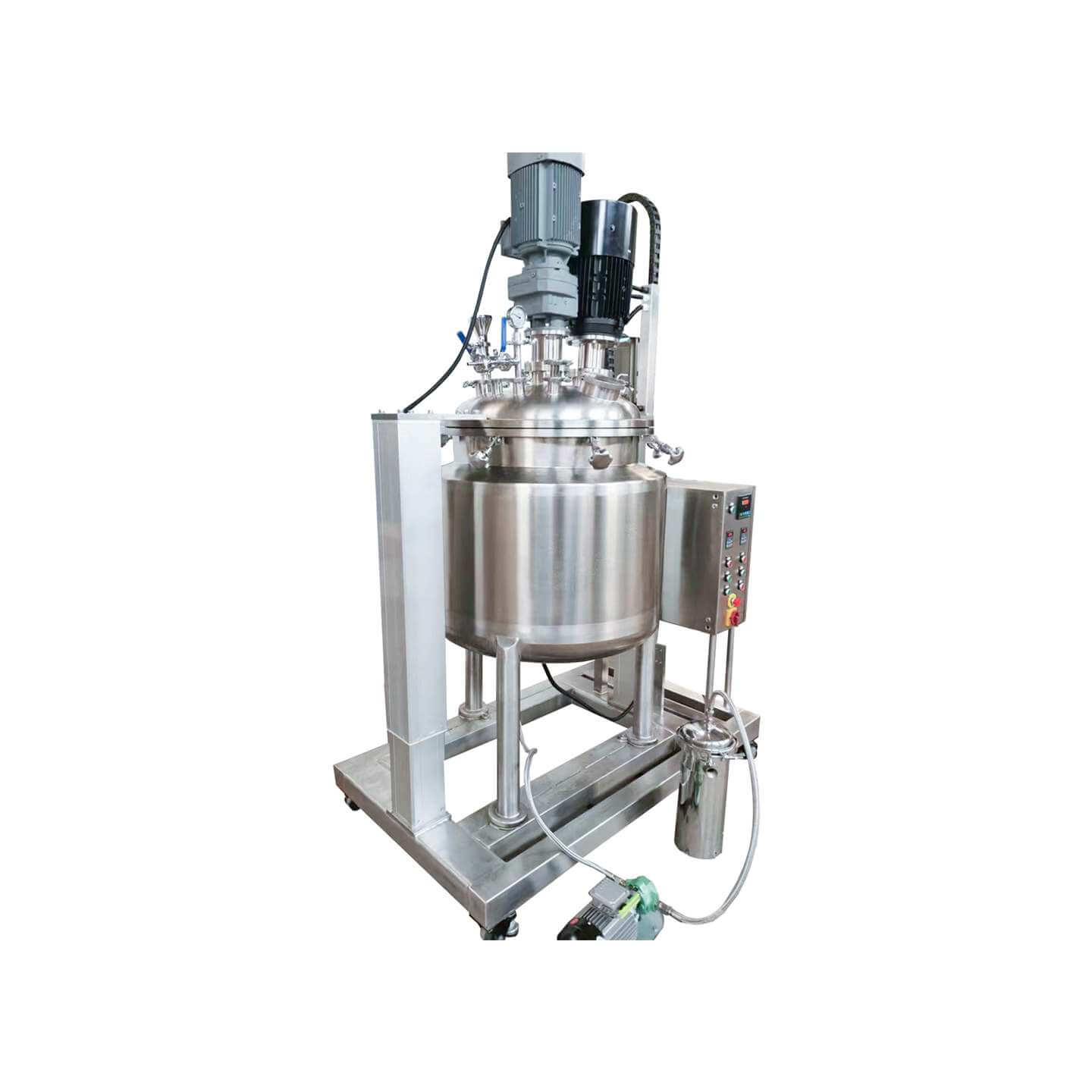

Laboratory Reactor
Laboratory reactor: used in the chemical industry, pesticide, paint, and other fields
Material
glass, stainless steel (316, 304), carbon steel, others
Capacity (L)
10-10000+
Mixing system
anchor, paddle, frame and others
Heating system
electric heating, oil heating and others
The laboratory reactor is small in size, beautiful in appearance, light, and fast in installation. It is composed of a pot body, pot cover, stirrer, jacket, support and transmission device, shaft sealing device, etc. The type of stirring device, rotation speed, sealing structure, heating method, etc. are produced.
Request a quoteThe laboratory reactor is mainly composed of a cylinder, a jacket, support, a stirrer, various instruments, and an electrical control box. With the change of the temperature in the jacket, two or more experimental materials in the cylinder of the laboratory reactor undergo physical or chemical reactions under the mixing action of the agitator. The laboratory reactor is simple in structure, small in size, light in weight, and easy to install and use. Laboratory reactors are mainly used in universities, research institutes, or large-scale chemical production plants to conduct a small amount of product trial production.

The laboratory reactor is used for chemical, high temperature, and high pressure reactor or catalytic reactor, it is necessary to measure pressure, temperature, and speed and add inert gas protection at the same time, stabilize the pressure and realize the experimental environment under the conditions of online sampling or online feeding.
The laboratory reactor is suitable for photochemical high pressure reaction, reduction of carbon dioxide CO2, reduction of carbon dioxide CO2 to methanol, reduction of carbon dioxide CO2 to methane CH4, reduction and degradation of nitrogen oxides NOx, and high-pressure photocatalytic degradation of formaldehyde. Photocatalytic reaction, Fischer-Tropsch reaction, hydrogenation reaction, polymerization reaction, homogeneous reaction, carbon dioxide supercritical reaction, etc.
The laboratory reactor is composed of a special light source, a stainless steel kettle body, and a control system. It is used for pilot and scale-up production of high temperature and high pressure photochemical catalysis, synthesis, and degradation in the fields of new energy, environment, and new drug research and development.
Laboratory reactor classification
1. Use flameproof type for oily materials; choose the non-flameproof type for common materials
2. Stainless steel is required for materials with pH requirements, otherwise carbon steel can be used
3. Sealing method: mechanical seal, packing seal
4. The installation methods include ear support, leg support, and support support
5. According to the heating method, can be divided into electric heating, heat conduction oil circulating heating, steam heating, or far-infrared heating, which can be selected according to the conditions of the site.
Chemical reactor technical features
1. The light source can be selected according to customer requirements, using an LCD 10.1-inch liquid crystal touch controller, the photoelectric parameters of the light source, the temperature of the photochemical reaction, the stirring, and other parameters are digitally displayed on the screen in real-time.
2. The connection part between the light source and the kettle body adopts technology to ensure pressure and airtightness.
3. More professional photochemical kettle body production process: the kettle body includes a pressure gauge, explosion-proof device, intake valve, sampling valve, temperature probe rod, pressure light source insertion port, etc., which is more convenient under the premise of ensuring your production safety. your action.
4. The immersion light source design is adopted, and the material is in full contact with the light source. The photochemical reactor is equipped with a high-power stirring motor to drive the anchor stirring paddle so that the material can evenly absorb the photon energy.
5. Embedded integrated heating module structure, the heating is more uniform. The kettle body and heater can be completely separated. It greatly facilitates the disassembly of the reactor and improves work efficiency.




